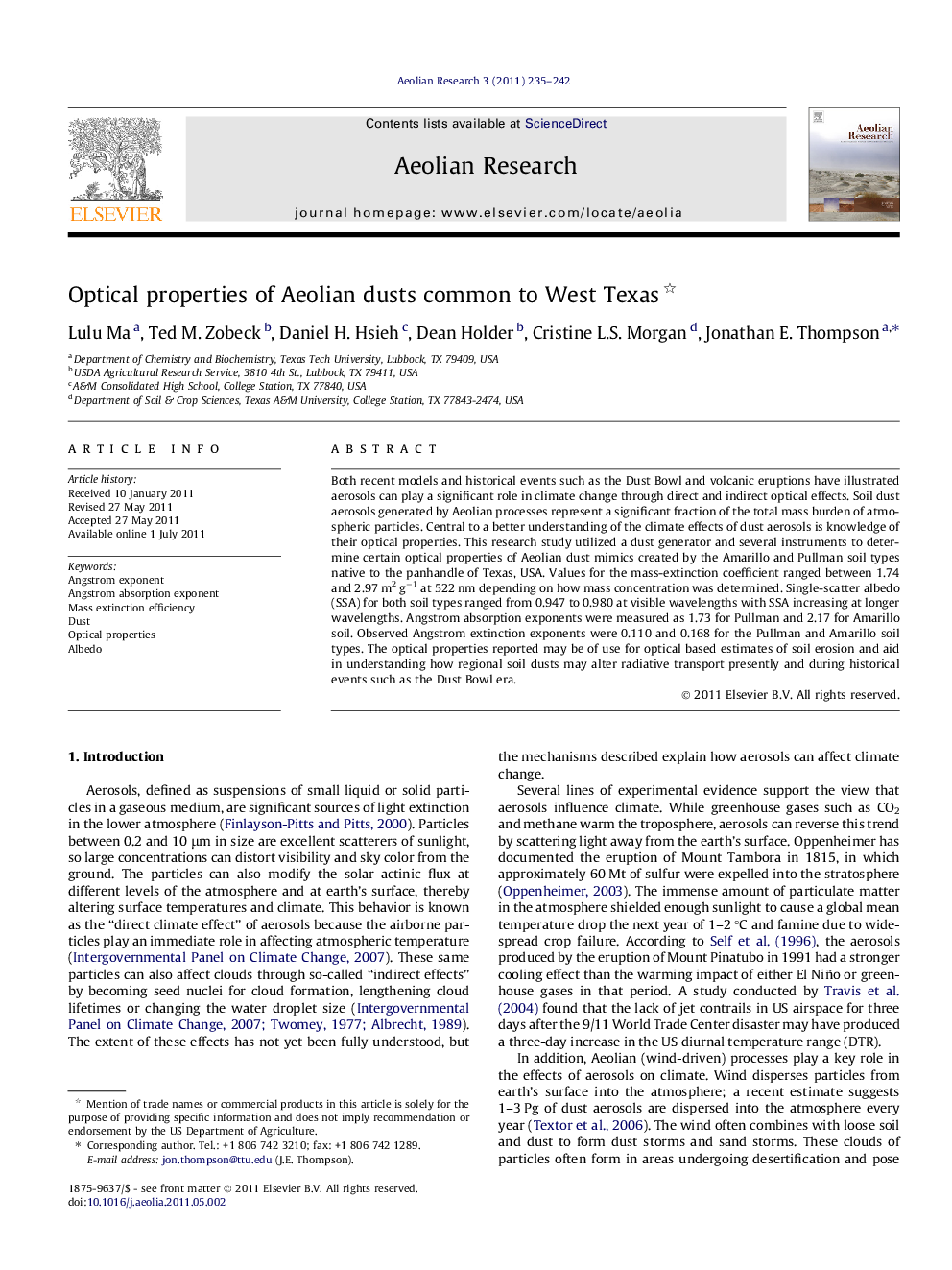| Article ID | Journal | Published Year | Pages | File Type |
|---|---|---|---|---|
| 4673861 | Aeolian Research | 2011 | 8 Pages |
Both recent models and historical events such as the Dust Bowl and volcanic eruptions have illustrated aerosols can play a significant role in climate change through direct and indirect optical effects. Soil dust aerosols generated by Aeolian processes represent a significant fraction of the total mass burden of atmospheric particles. Central to a better understanding of the climate effects of dust aerosols is knowledge of their optical properties. This research study utilized a dust generator and several instruments to determine certain optical properties of Aeolian dust mimics created by the Amarillo and Pullman soil types native to the panhandle of Texas, USA. Values for the mass-extinction coefficient ranged between 1.74 and 2.97 m2 g−1 at 522 nm depending on how mass concentration was determined. Single-scatter albedo (SSA) for both soil types ranged from 0.947 to 0.980 at visible wavelengths with SSA increasing at longer wavelengths. Angstrom absorption exponents were measured as 1.73 for Pullman and 2.17 for Amarillo soil. Observed Angstrom extinction exponents were 0.110 and 0.168 for the Pullman and Amarillo soil types. The optical properties reported may be of use for optical based estimates of soil erosion and aid in understanding how regional soil dusts may alter radiative transport presently and during historical events such as the Dust Bowl era.
► Optical properties of wind-blown dusts native to the Texas Panhandle were studied. ► Single scatter albedo of Amarillo and Pullman soil aerosols range from 0.947–0.980. ► Single scatter albedo increased at larger visible wavelengths. ► Angstrom absorption exponents for soil dusts were 1.73 and 2.17. ► Angstrom extinction exponents were 0.110 and 0.168 for soil dusts.
